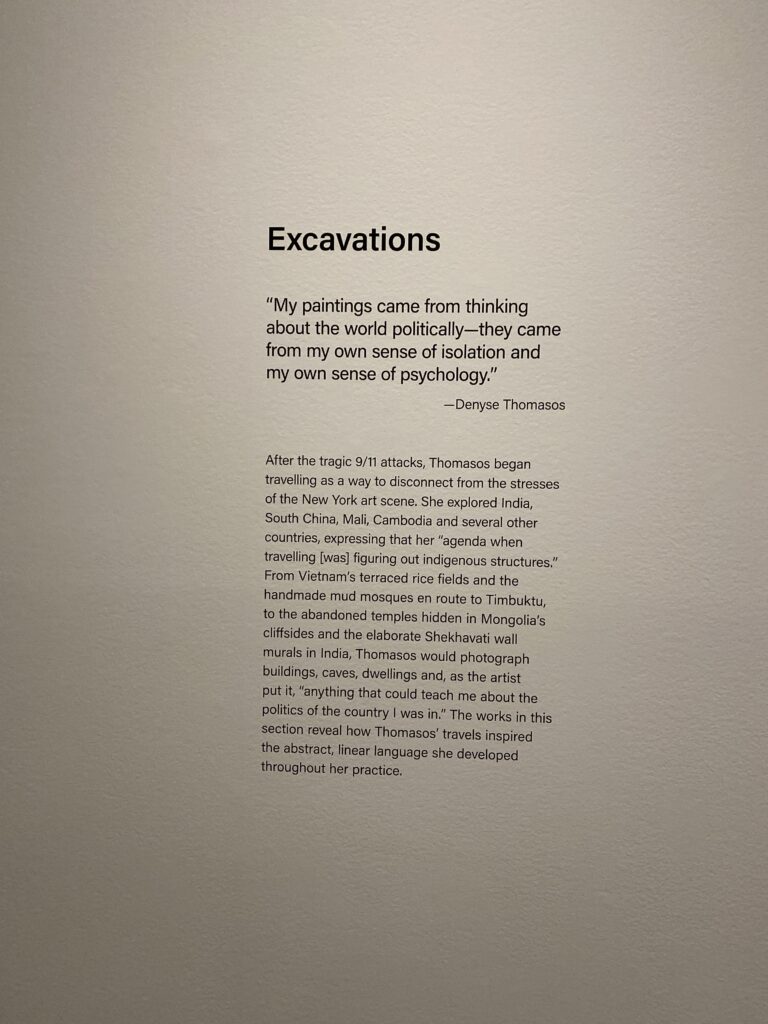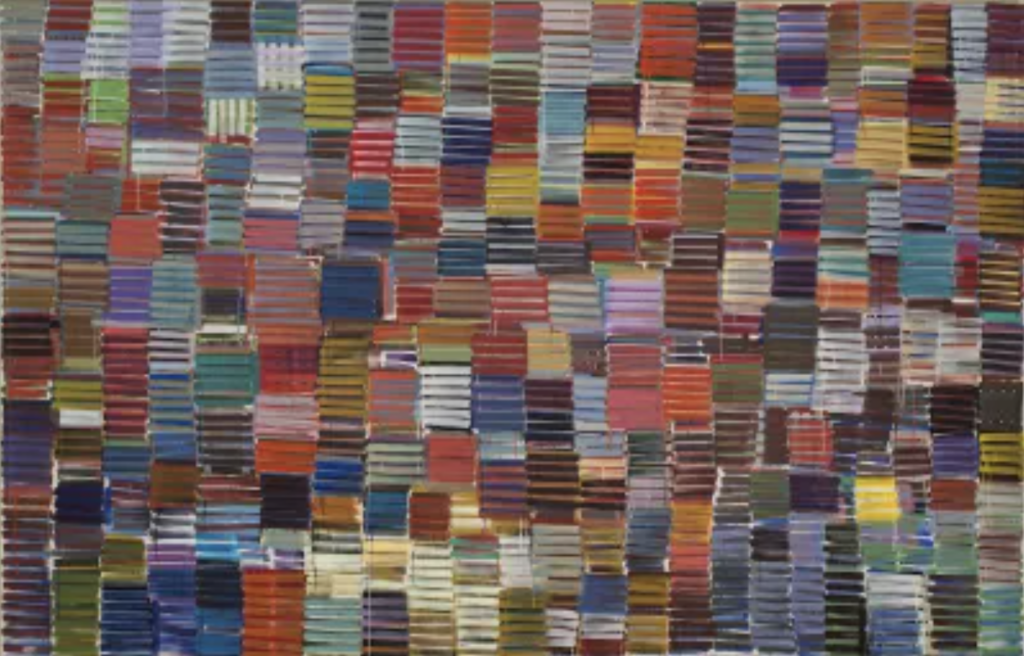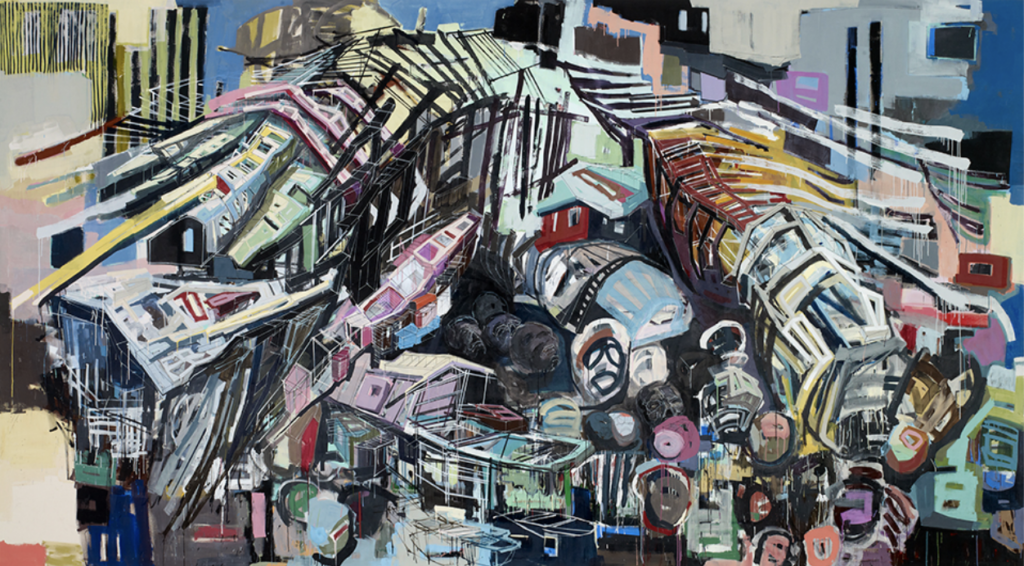Gallery Visit Artist Research: Denyse Thomasos
I went to the Vancouver Art Gallery in March and saw a few different exhibitions that they had on at the time. My favourite section was a retrospective for Denyse Thomasos called “Just Beyond”. Denyse Thomasos was a Trinidadian-Canadian abstract artist from the 90s. Her work was often inspired by current events and the recent history of black people in North America. Some of her most famous works were attempts to convey the events of the transatlantic slave trade without using portraiture or figures at all. Instead she expressed the fear, anger, and resulting generational impacts through brutalistic linework and bold colours intermixed with swaths of gray and beige.
My favourite works were these massive paintings that hung in nearly closed-off rooms to the side of the main gallery space. One painting for each of four walls enveloped the viewer in colour and expression. I could feel the enormity of her spirit and what she was trying to say with the works, and presenting such enormous paintings in such a small space was genius on the part of the curators. I think the paintings would have lost a lot of weight if they were displayed across an empty white wall next to the smaller works.
Thomasos did drawings as well, but I found the paintings to be the most visually interesting to me.
Many of her works featured architectural line-work and reminded me of New York, or even prisons. Though the structures were imagined, they had just enough realistic perspective to be read as buildings and the like, but were still abstract enough to draw the viewer in and make them question what exactly they were looking at. Coupled with the intense and pointed choices in colour, Thomasos’s work made an impact in my head not only visually but conceptually. Though I might not know a lot about her sources of subject inspiration, Thomasos conveyed an emotionality and spirit through her work that is tangible to anyone.




In an interview with ArtNews, curator for the Remi Modern, Michelle Jacques stated about Thomasos, “She approached the oppressions and legacies of Black life since slavery in a metaphorical way that maybe didn’t seem political enough in some spaces, and that maybe seemed too political in others,” Jacques said. “The way she approaches all this is a really effective way to draw in people who maybe thought they didn’t want to talk about this.”
“She made this shift from, like, figuration to abstraction, but she never actually abandoned interest in the figure, because all her work is dealing with bodies and how they’re confined in the spaces they inhabit.” – Sally Frater, co-curator at Remi Modern
“Last year’s Toronto Biennial of Art featured a grouping of untitled charcoal drawings by Thomasos from the late ’80s; they had been kept under a bed by one of her sisters until recently. They offer surreal visions of environments that cannot exist—a warped landscape filled with windowless walls, a ramp that leads downward into an ovular area with no exit. Tairone Bastien, a curator of the Toronto Biennial, pointed out that in one work, “the underbelly of a ship has been turned into a dark honeycomb that resembles graves or claustrophobic spaces that bodies would’ve been contained within.” He called works like these a “revelation.”” – Art News



